Sin Ho Loop: A Complete Guide to Northern Vietnam’s Hidden Adventure
The Sin Ho Loop is one of Vietnam’s most captivating trips, weaving through the northern highlands’ stunning scenery. Nestled between Sapa and Lai Chau, this route invites travelers to explore not only its natural beauty but also its rich culture. Let MOTOGO Tours explore this amazing path.
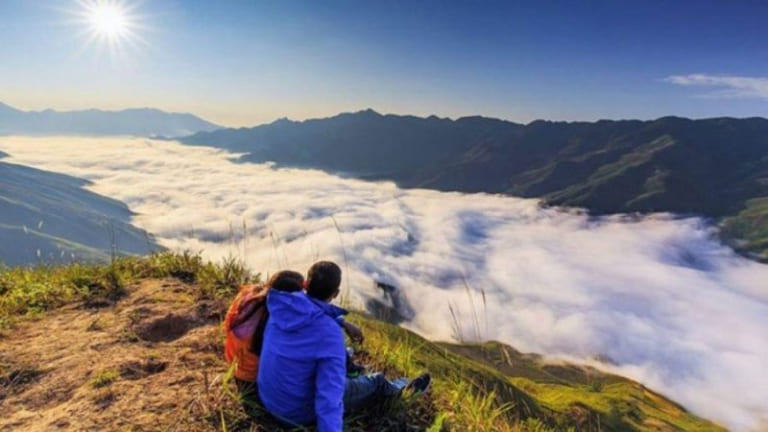
Why Choose the Sin Ho Loop?
The Sin Ho Loop is a fascinating trip via some of Vietnam’s most breathtaking and culturally diverse settings. Here are some reasons this loop ought to be first on your travel agenda.
Unmatched Natural Beauty
The Sin Ho Loop boasts amazing natural surroundings among other things. Every turn you make unveils a different scene, almost as though nature is performing a performance only for you.
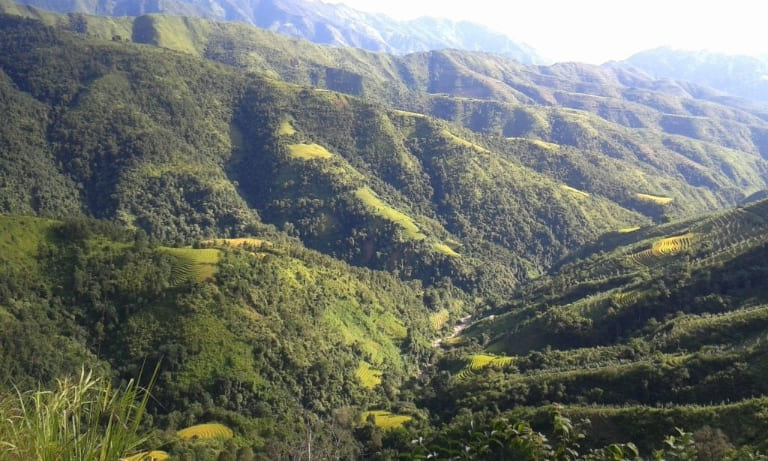
- Scenic Views: From the lush valleys of Sapa to the rocky slopes of Lai Châu, the loop winds you over many topographies. You will be treated to spectacular views changing with the seasons as you drive or bike across these sections. The rice fields glisten in golden tones in the fall; spring provides vivid greens and wildflowers.
- Tranquility and Solitude: The Sin Ho Loop lets you get away from the bustle of city life unlike more commercialized travel paths. For people looking for peace and tranquilly, this is the perfect place since you can discover peaceful areas to unwind and soak in the surroundings.
Cultural Richness
Beyond its breathtaking scenery, the Sin Ho Loop is a cultural melting pot providing a real window into the life of many ethnic groups that call this area home.
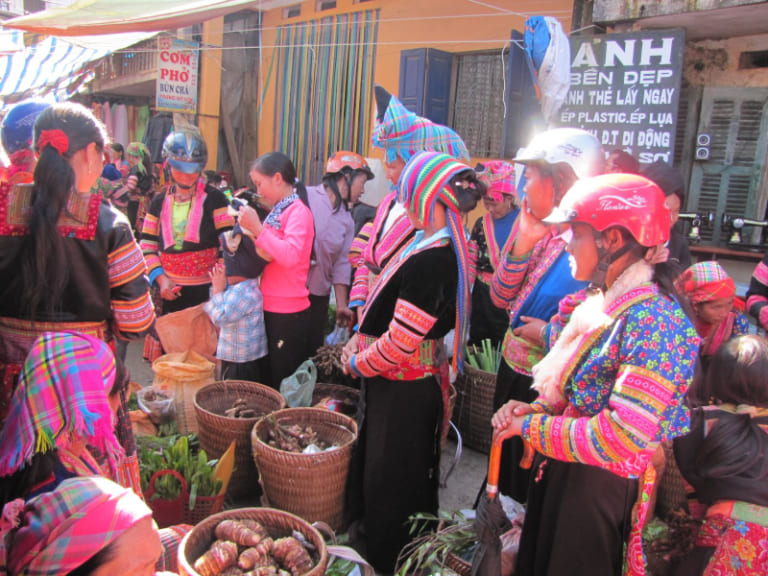
- Ethnic Diversity: The loop runs via places home to the Dao, Thai, and H’Mong among other ethnic communities. Every group offers visitors a rich cultural tapestry to discover through their own customs, clothes, and languages.
- Traditional Markets and Festivals: Along the road, you can stop at neighborhood markets where these people offer handcrafted goods, fresh vegetables, and unusual cuisine. Festivals let you enjoy the rich cultural legacy of the area by featuring traditional music, dance, and rites.
- Homestays and Local Interactions: Choosing homestays is a terrific approach to really experience the local way of life. Living with a family might result in meaningful relationships where you might learn about their customs, eat handmade food, and engage in daily activities.
- Culinary Adventures: The Sin Ho Loop is also the heaven for foodies. From the flavorful “thang co,” a classic horse meat soup, to several kinds of sticky rice, every area has distinctive gastronomic pleasures. In addition to pleasing your taste receptors, trying regional cuisine helps you to better appreciate the local way of life.
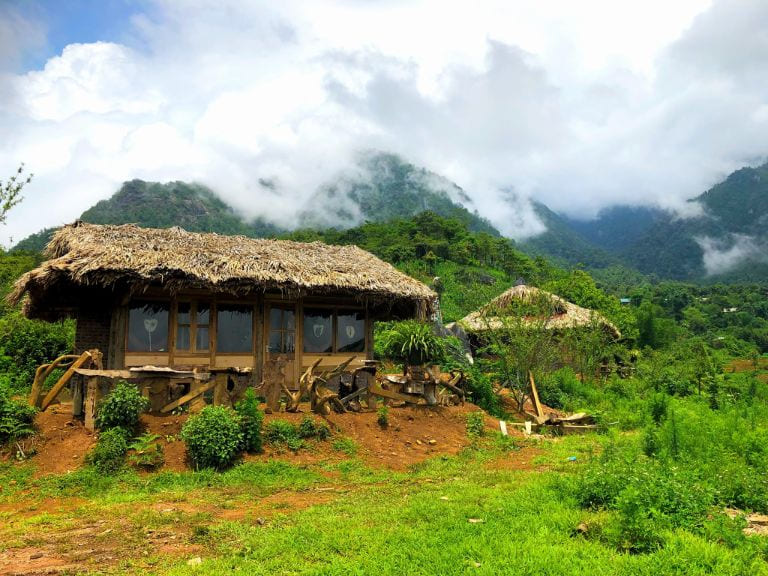
Exploring the Sin Ho Loop
The Sin Ho Loop in Vietnam is a hidden gem ready for discovery. Traveling over some of the most breathtaking landscapes in the nation, this gorgeous trip starts in the charming town of Sapa and ends in the isolated mountain town of Sin Ho. The approximately 320 kilometers of the road excursion consist in three main sections:
Section 1: Sapa to Lai Chau (via road QL4D): 70km
Section 2: Lai Chau to Sin Ho (via Phong Tho): 115km
Section 3: Sin Ho to Sapa (via road 4D): 135km
Section 1: Sapa to Lai Chau via QL4D (70 km)
Setting Off from Sapa
Starting your adventure in the little town of Sapa, often veiled in mist, the air is crisp and chilly. Starting west on Road QL4D, the first stretch might be somewhat difficult. Potholes, mud streaks, and the anarchy of traffic define the roadways, especially in view of continuous building. But the route changes as you travel farther from Sapa to expose stunning waterfalls and amazing vistas.
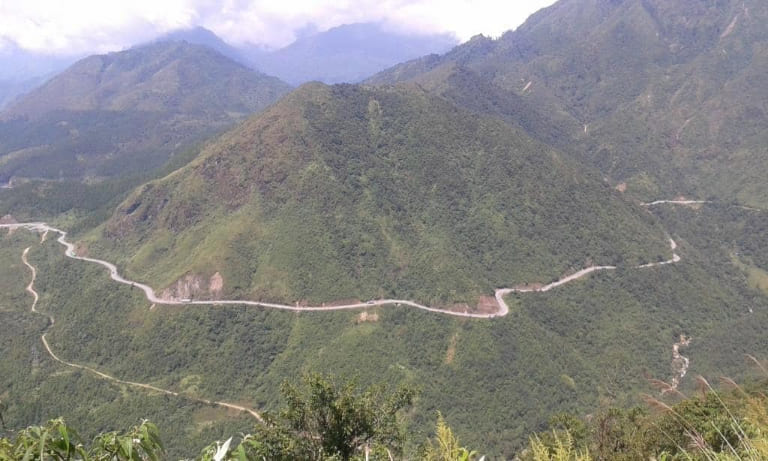
Waterfalls and Scenic Vistas
Your first stops along the path are Love Falls and Silver Falls. These lovely waterfalls offer a great chance for some amazing images and a minute to inhale the pure mountain air. Proceeding forward, you will climb 1,900 meters (6,230 feet), the highest mountain pass in Vietnam, Tram Ton Pass (also O Quy Ho Pass).

When you reach the pass, if the weather is clear, you’ll be treated to panoramic views of the serpentine road winding through the mountains. Even on misty days, the difference in climate becomes apparent—it’s significantly warmer here than in Sapa. This pass serves as a climatic and provincial divide, marking the boundary between Lao Cai and Lai Chau provinces. Look for makeshift viewing platforms along the roadside where you can soak in the stunning vistas.

Dominating Peaks and Alpine Scenery
Mount Fansipan, the highest mountain in Indochina, towers to 3,143 meters (10,312 feet), and is the remarkable, crenelated ridge to the south. Its weight hangs over the pass, throwing shadows over the road as travel downslope. Indigo rivers cut their paths over big boulders deep down in the valley, producing an amazing natural tapestry.
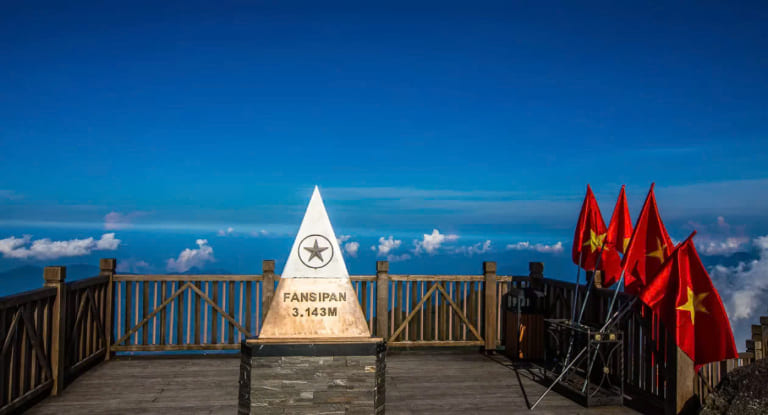
The road snakes down immaculate alpine terrain, via the Dong Tien Son Caves, then finds Tam Duong. Tam Duong may not be a busy town, but it does have a few nice restaurants along the main road and lodging choices. Think of lodging the more affordable Tan Sinh Guest House or the Putaleng Hotel, which has nice rooms for about $20.
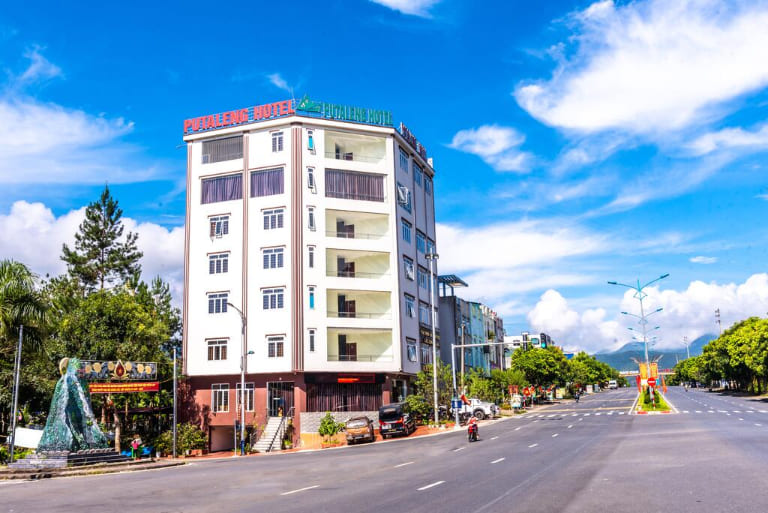
Discovering Lai Chau
Keep northwest on Road QL4D for about forty kilometers; don’t miss the opportunity to veer to see Tac Tinh Falls, right behind Tam Duong. If you’re traveling in September or October, keep an eye out for stunning valleys of terraced rice fields just before descending into Lai Chau. These views are the kind that travel brochures promise Sapa will offer, but you’ll find them in the captivating landscapes of Lai Chau.

Upon arriving in Lai Chau City, you’ll encounter a brand-new concrete creation nestled in a remote valley surrounded by pyramidal peaks. The city is characterized by grand government buildings, wide boulevards, and large, empty public spaces. On a wet, chilly day, Lai Chau may feel somewhat soulless, but on a sunny day, its charm becomes apparent.
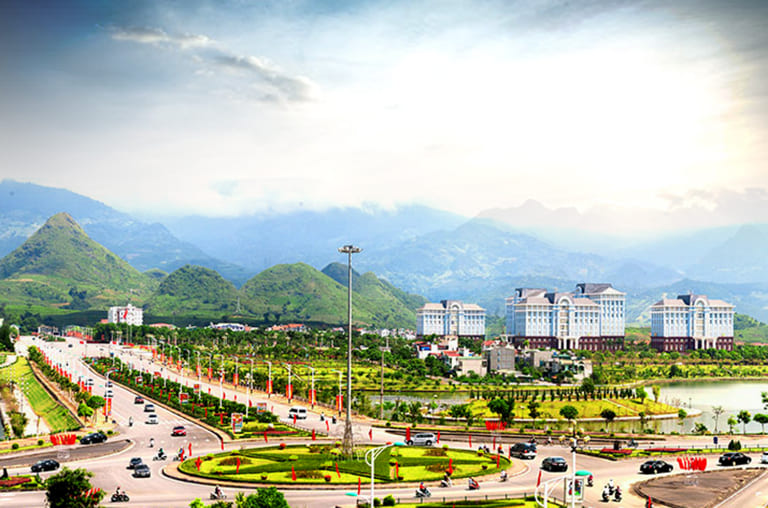
While the scale of its infrastructure seems disproportionate to the city’s population, recent developments have begun to inject some character into this provincial capital. With several cheap guesthouses and hotels along 30 Tháng 4 Street, it provides a handy overnight stop. Both the Hà Nhi Hotel (30 Tháng 4 Street) and the Binh Long Hotel (2 Tháng 8 Street) have neat, reasonably priced rooms recommended.
Savoring Local Cuisine
Look around the lake in the evenings for some mouthwatering Vietnamese savory pancakes called bánh xèo and ốc, or snails and shells. A local favorite, meaties should surely sample the roast suckling pig at Quán 25 (62, 30 Tháng 4 Street). Visit Gateway Cafe (305 Tran Hung Dao Street) for an energizing cup of coffee to replenish before setting out your adventure.
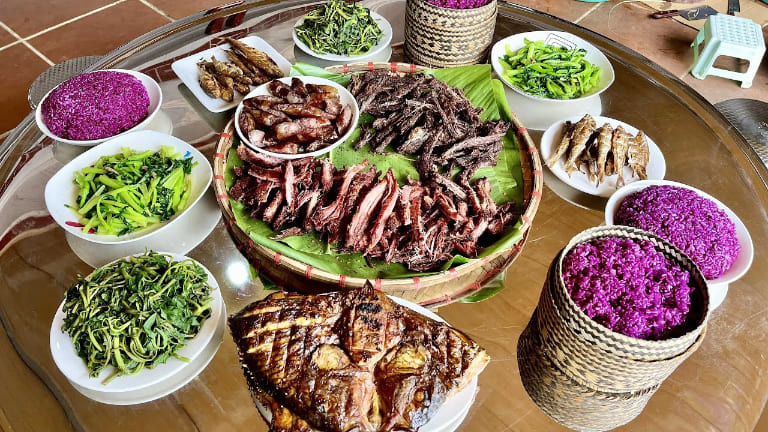
Section 2: Lai Chau to Sin Ho via Phong Tho (115 km)
The Journey to Phong Tho
Leave Lai Chau and keep northwest on Road QL4D toward Phong Tho. Before descending into rich valleys, this part of the road—which crosses great mountains—is in perfect state. Eight kilometers or so before arriving at Phong Tho, a heading north brings Muong So, an optional picturesque diversion. Over 70 to 80 kilometers, this extra loop features steep landscapes, terraced rice and corn fields, and little minority hamlets.
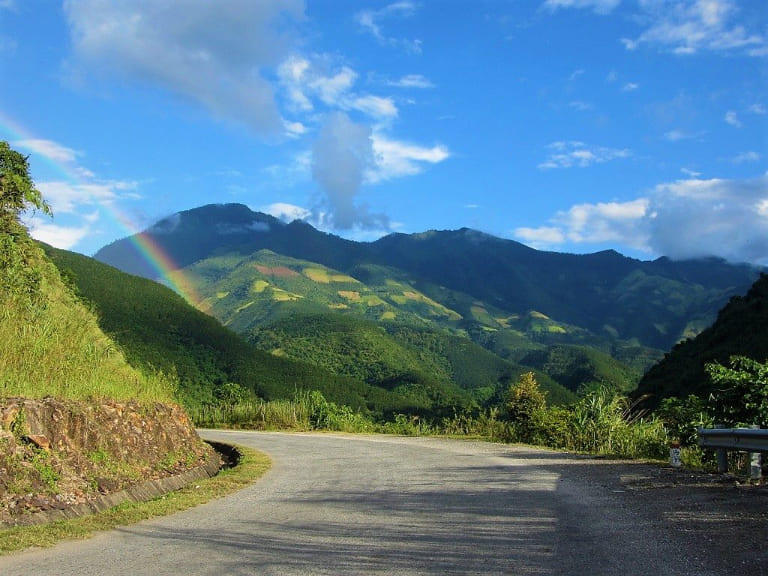
Exploring Phong Tho
Among the Phong Tho hotels, the Lan Anh Hotel is notable for its friendly environment with a timber and tile construction around a verdant courtyard. Following Phong Tho, the route veers southwest via the Nam Na River valley, where you may have a quiet journey across breathtaking scenery.
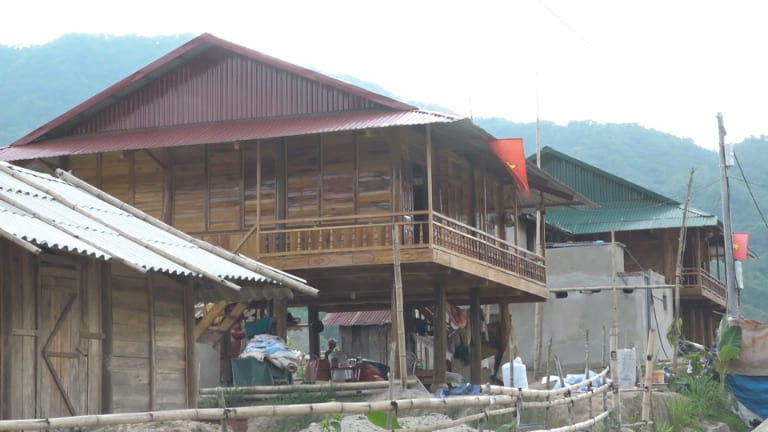
The location at Nam Cay/Chan Nua seems more like a rural crossing than a busy settlement at the junction. If you would want to spend the night, here is the guest home of Hưng Tâm, together with several local cuisine choices.
The Scenic Ascent to Sin Ho
Turn left—due east—along Road TL128 at the junction to reach the breathtaking and steep ascent toward Sin Ho. For forty kilometers, this single-lane road winds with amazing vistas of ridges, farms, ethnic minority villages, and clean waterways. Every turn reveals amazing scenery that will make you wonder.
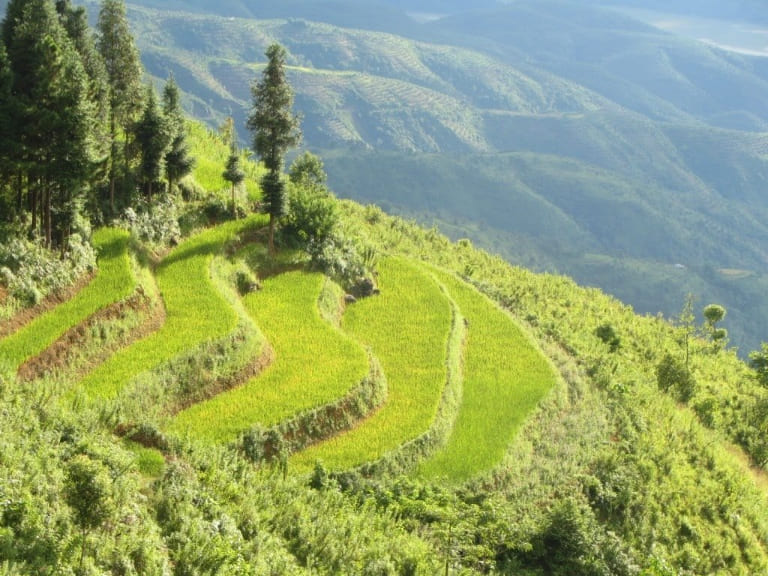
Though the road conditions are usually adequate, be ready for sporadic landslides, especially following severe rain, which could produce muddy areas and potholes. The road veers a sequence of switchbacks revealing breathtaking views down to the Nam Na River valley and beyond to the far-off mountain ranges spanning the border with China just as you believe the sights cannot get much better.
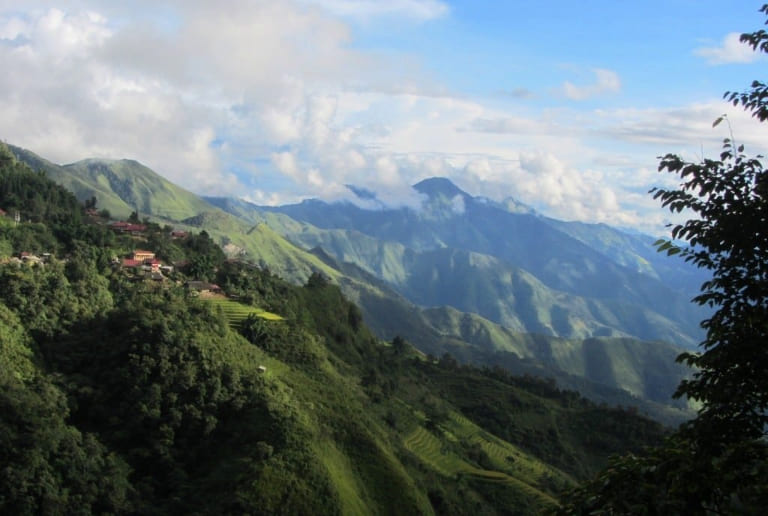
Arrival in Sin Ho
Like Sapa, Sin Ho sometimes finds herself covered in mist and rain, giving the town an isolated, tough impression. Still, constant improvements to public areas are improving their attractiveness, therefore revealing a hidden treasure just waiting to be found. Situated on a plateau at more than 1,000 meters (3,300 feet), Sin Ho enjoys a mild temperature, particularly in the nights.
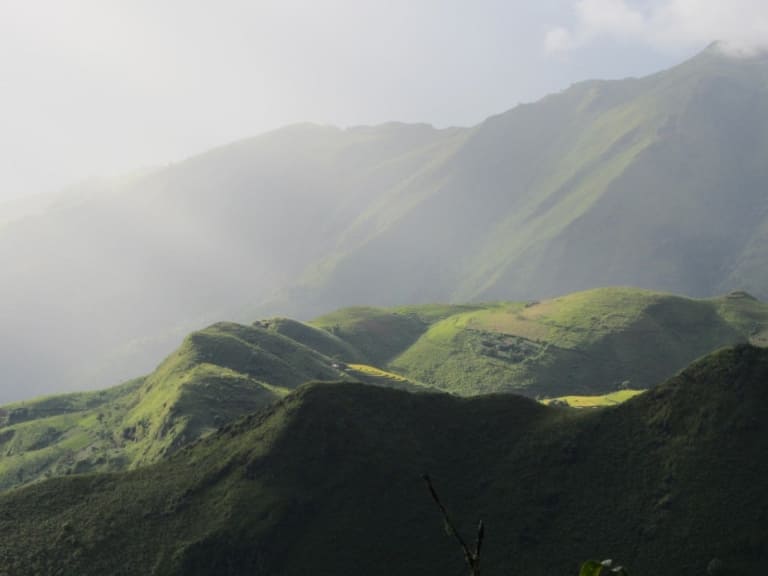
Time your trip to coincide with the Sunday market, which hums between 8 AM and 11 AM, to really enjoy the local way of life. Hundreds of ethnic ladies, each wearing their vivid traditional clothing, find attraction in this active market.There is a tranquil and relaxed mood created by the mostly fresh meat, vegetable, fruit, and practical products for village life offers.
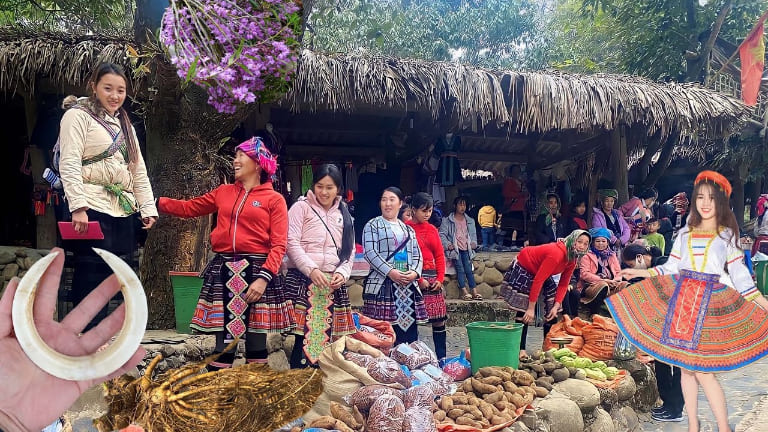
Dining and Accommodation Options
Around the main square, Sin Ho boasts various local restaurants offering great cơm phở (rice and noodles). Recently opening to add to the local gastronomic scene is a new bakery called Thanh Nam. Sin Ho’s accommodations are essentially reasonably priced guesthouses. Right next on my list is the Phuc Tho Hotel, conveniently close to the market. Under the direction of a nice elderly couple, it boasts tidy rooms with balconies facing the town.
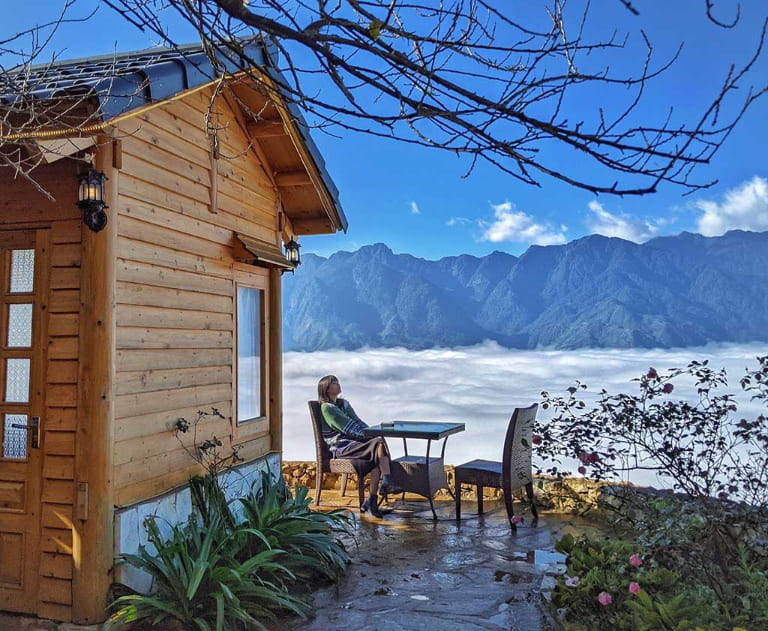
Section 3: Sin Ho to Sapa via the Old QL4D (135 km)
The Descent from Sin Ho
The 60-kilometer descent from Sin Ho back to Lai Chau along Road TL128 is just as stunning as the ascent. As you navigate the winding roads, the mist that often envelops Sin Ho lifts to reveal a vast landscape of endless mountains and craterous valleys, dotted with stilt-house villages along clear streams.
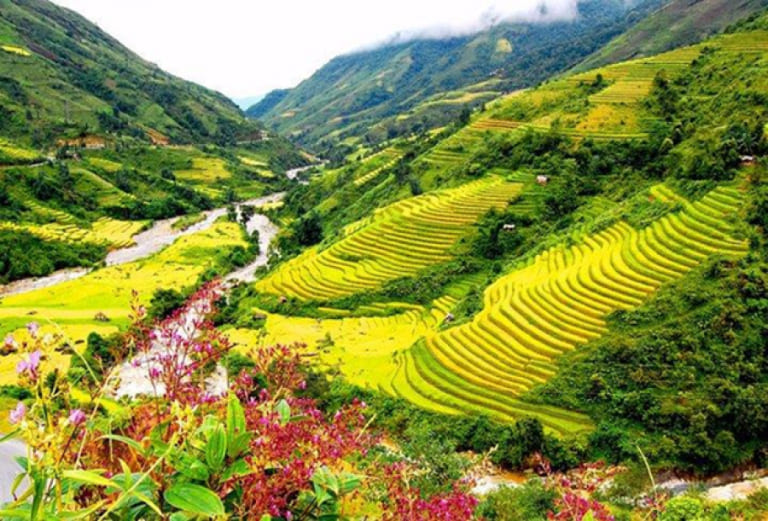
Approximately a third of the way down, there’s a junction with a turn off to the right, leading to Nam Tam. Although this route seems appealing, it has been noted to be in terrible state. For a better experience, try to visit Nam Tam from the north by Lai Chau.
Should you decide to keep on Road TL128, you will find yourself farther into the verdant terrain with the city of Lai Chau progressively visible below. If time allows, stop to explore the Pu Sam Cap Caves; this plunge through deep jungle is amazing. Tucked among the vegetation, these cavernues provide a peaceful place to stretch your legs and a window into the geological beauties of the area.
Reconnecting with QL4D
Once at Lai Chau, think about using Road 4D cũ as an other path back to Tam Duong. Turn right at the Ha Nhi Hotel on Dang Van Ngu Street to access this lovely path. This slower, more picturesque route meanders across limestone karsts and large tea estates, offering a peaceful haven from the more busy routes.
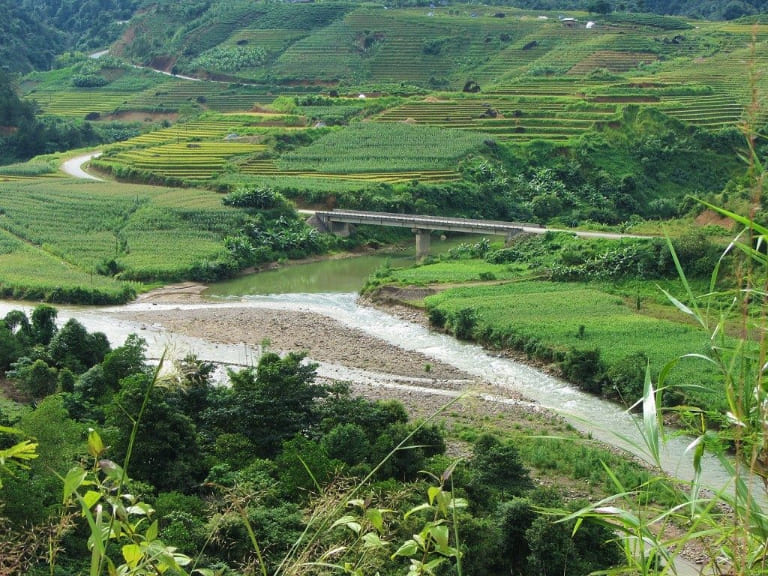
From Tam Duong, find Road QL4D and then back off to Sapa. Once more climbing the Tram Ton Pass, seize the chance to enjoy the breathtaking views from another perspective. The panorama can be quite changed by the change in lighting and weather, hence this return trip is equally fulfilling as the first.
Practical Tips for Your Journey
- Best Time to Visit: Ideal months to visit the Sin Ho Loop are September through November and from March to May. Usually nice, the weather at these times provides bright sky and vivid scenery, especially in the terraced rice fields.
- Transportation: Renting a motorbike is a common approach to negotiate the loop since it gives you the opportunity to stop anywhere you choose. Make sure the local road conditions and traffic are within your comfort level. Alternatively, you may improve your experience by hiring a private automobile or signing up for a guided MOTOGO Tours trip.
- Packing Essentials: Bring layered clothes since, especially in Sin Ho, daily and night temperatures can vary greatly. Exploration of the rough ground depends on strong shoes. Remember a camera to photograph the breathtaking scenery and active local life!
- Cultural Sensitivity: Always treat local customs and practices with respect whether visiting markets and minority communities. Requesting permission before photographing people or their homes is a decent habit that demonstrates respect of their culture.
- Local Cuisine: Try Sin Ho’s native herbal drinks and regional cuisine including cơm lam, or bamboo rice. Talk to residents to find secret gastronomic treasures possibly not included on travel guides.
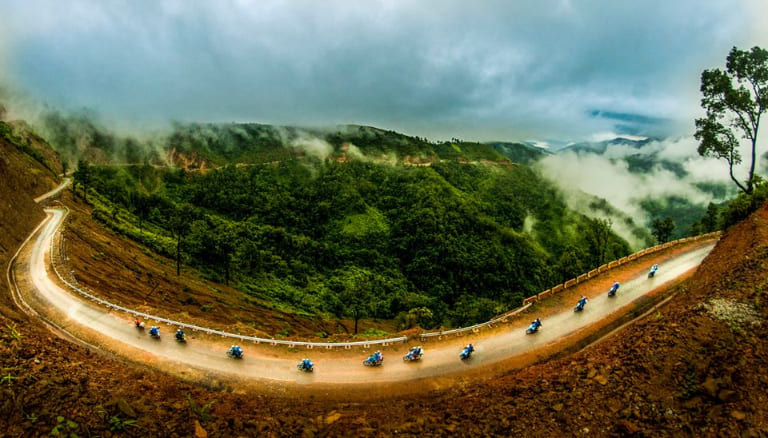
The Sin Ho Loop has a special fusion of natural beauty, adventure, and cultural diversity. This road lets you establish a connection with the terrain and the people, therefore creating lifetime memories. This loop provides something for everyone whether your search is for breathtaking views, rich cultural encounters, or just a respite from the bustle.
Related Posts:
- Beautiful Routes in Northern Vietnam: Discover Scenic Journeys and Culture
- Experience the Best of Vietnam on the Harvest Route
- The Cloud-Chasing Route: A Dream Journey for Adventure Seekers
- Explore Vietnam’s Limestone Loop: Hanoi to Lao Border
- The Ultimate Guide to the Binh Lieu Loop: A Hidden Gem in Northern Vietnam

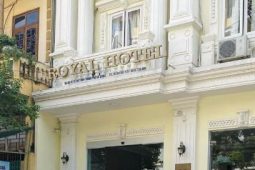
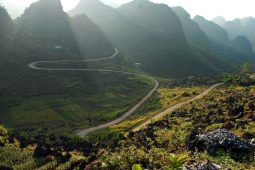
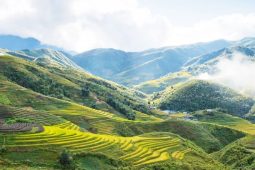

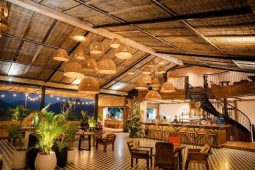


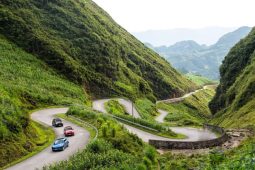


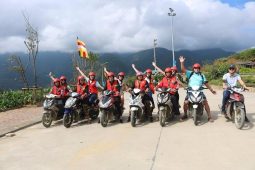
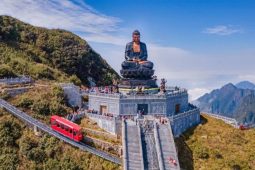
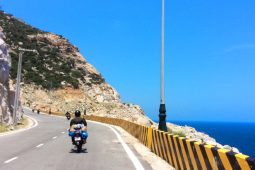
Be the first to comment!